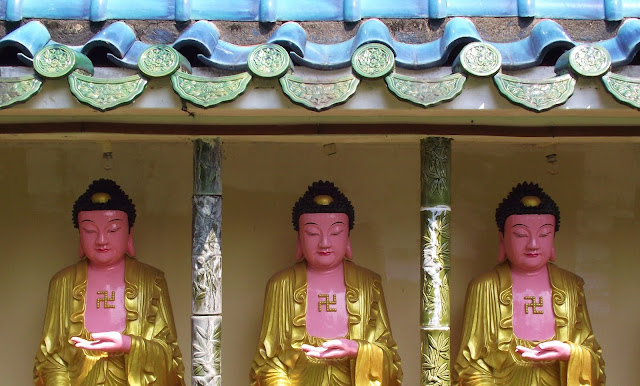Covering about 30 acres, and home to millions of representations of Buddha, Kek Lok Si is the largest Buddhist temple in Malaysia.
Built in the main between 1890 and 1905, the temple is still very much under construction. One of the chief patrons was Cheong Fatt Tze, he of Penang's Blue Mansion.
It is a pilgrimage destination for Buddhists from across South East Asia. Two monumental structures provide the key attractions.
The second is the 99 feet tall bronze statue of Kuan Yin, the Taoist goddess of mercy, the tallest in the world, still undergoing the decorative process.
The temple's eclectic mix of Mahayana (complete enlightenment) Buddhism, Theravada (conservative) Buddhism, and traditional Chinese Taoism - Kek Lok Si Temple translates as Heavenly Temple, which covers all the ground - explains its widespread appeal.
The next planned development is a temple for the reception of Buddha relics. The fund-raising stalls of tat rather belie the Buddhist principle of not holding.
















